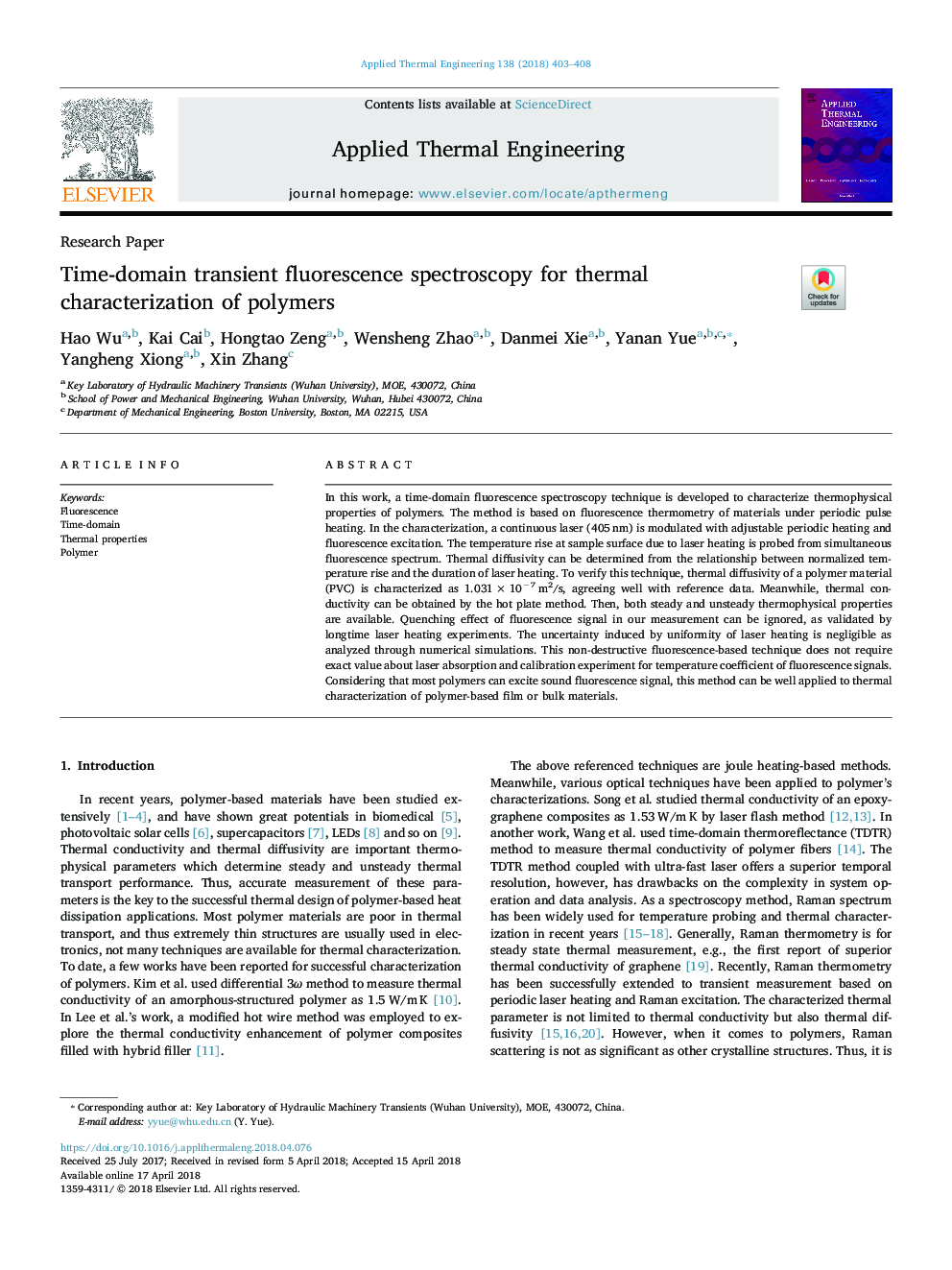| Article ID | Journal | Published Year | Pages | File Type |
|---|---|---|---|---|
| 7045269 | Applied Thermal Engineering | 2018 | 6 Pages |
Abstract
In this work, a time-domain fluorescence spectroscopy technique is developed to characterize thermophysical properties of polymers. The method is based on fluorescence thermometry of materials under periodic pulse heating. In the characterization, a continuous laser (405â¯nm) is modulated with adjustable periodic heating and fluorescence excitation. The temperature rise at sample surface due to laser heating is probed from simultaneous fluorescence spectrum. Thermal diffusivity can be determined from the relationship between normalized temperature rise and the duration of laser heating. To verify this technique, thermal diffusivity of a polymer material (PVC) is characterized as 1.031â¯Ãâ¯10â7â¯m2/s, agreeing well with reference data. Meanwhile, thermal conductivity can be obtained by the hot plate method. Then, both steady and unsteady thermophysical properties are available. Quenching effect of fluorescence signal in our measurement can be ignored, as validated by longtime laser heating experiments. The uncertainty induced by uniformity of laser heating is negligible as analyzed through numerical simulations. This non-destructive fluorescence-based technique does not require exact value about laser absorption and calibration experiment for temperature coefficient of fluorescence signals. Considering that most polymers can excite sound fluorescence signal, this method can be well applied to thermal characterization of polymer-based film or bulk materials.
Related Topics
Physical Sciences and Engineering
Chemical Engineering
Fluid Flow and Transfer Processes
Authors
Hao Wu, Kai Cai, Hongtao Zeng, Wensheng Zhao, Danmei Xie, Yanan Yue, Yangheng Xiong, Xin Zhang,
